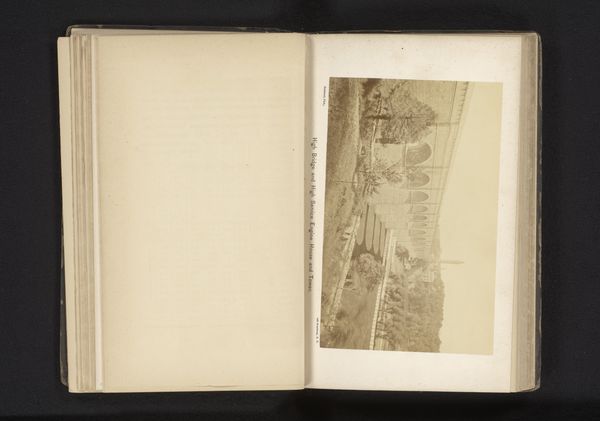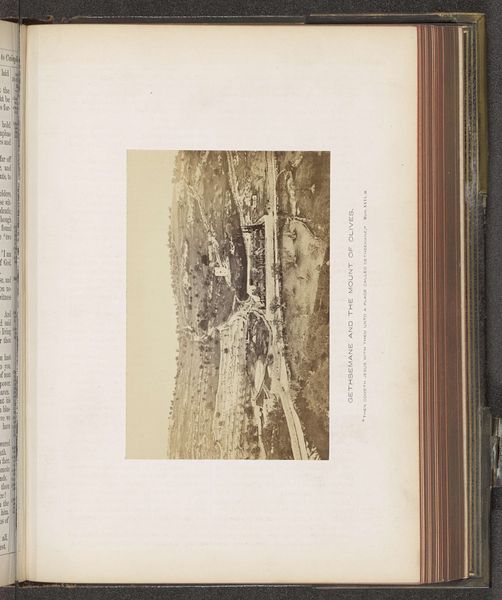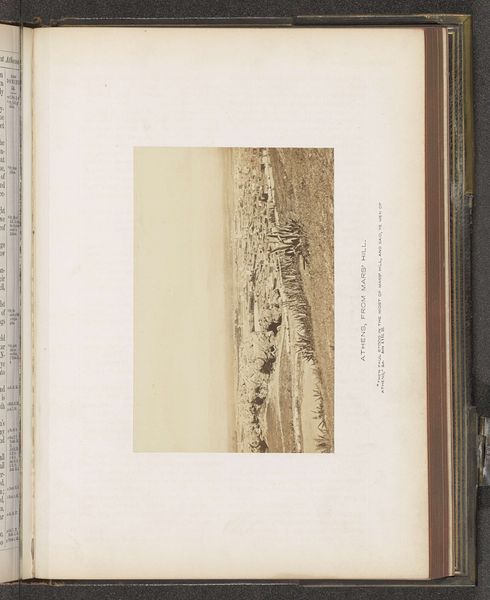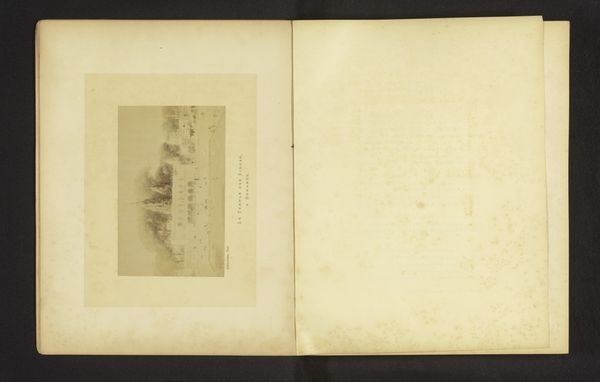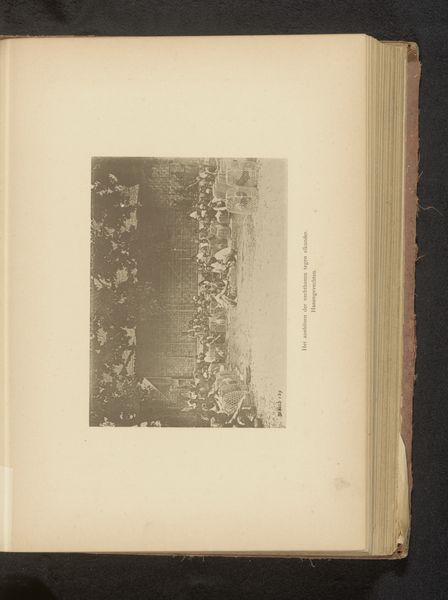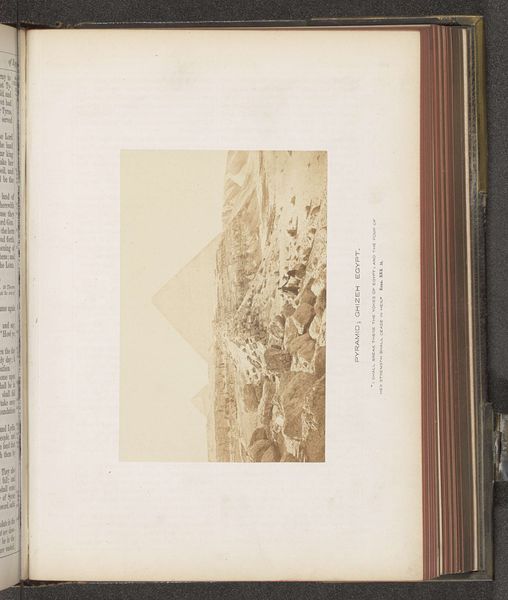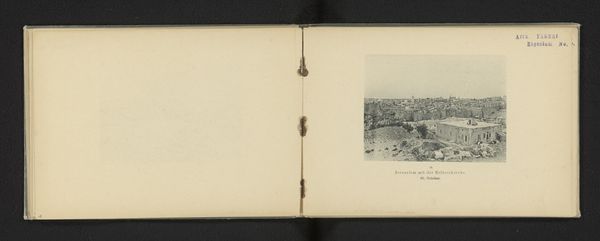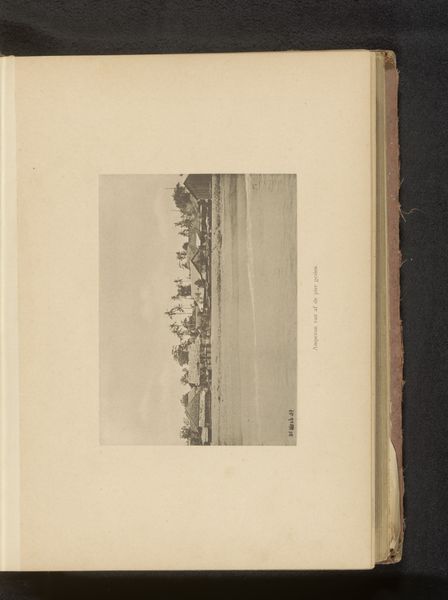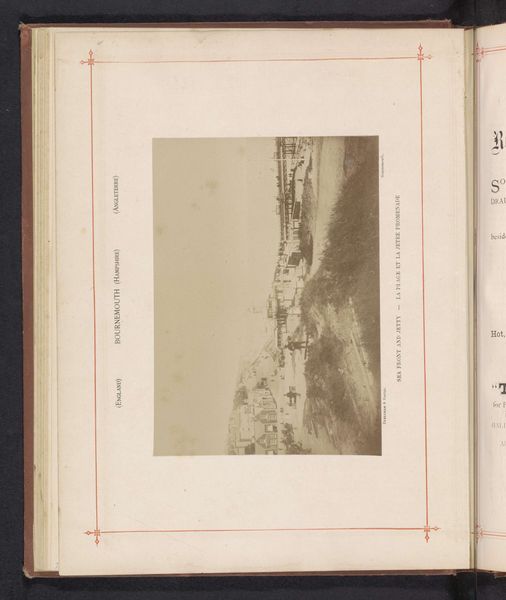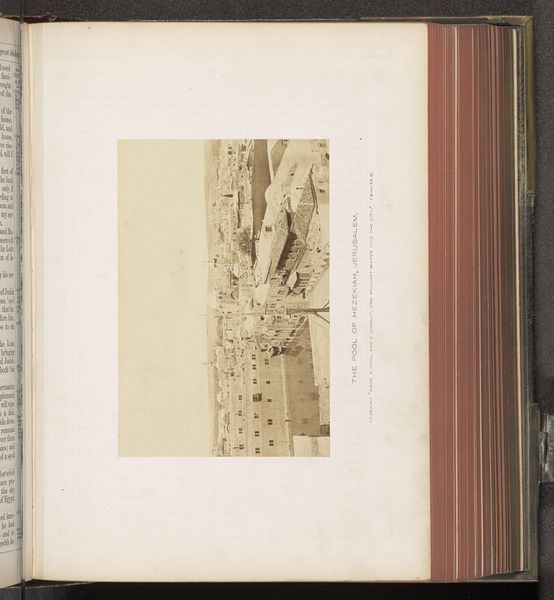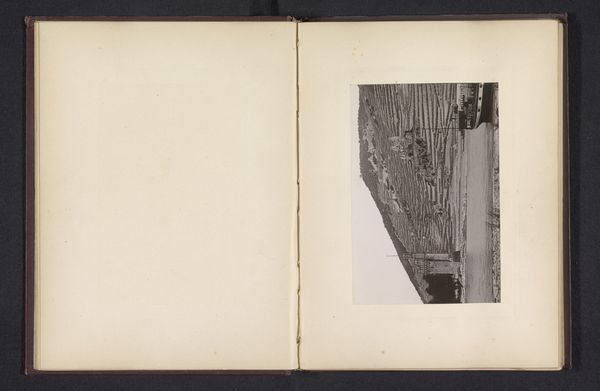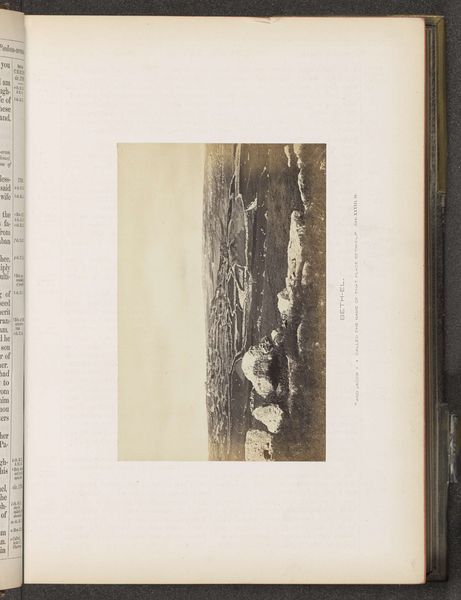
photography, gelatin-silver-print
#
landscape
#
photography
#
orientalism
#
gelatin-silver-print
Dimensions: height 105 mm, width 155 mm
Copyright: Rijks Museum: Open Domain
Curator: Francis Frith’s gelatin silver print, “View of Tiberias in Israel,” dating roughly from 1850 to 1865, presents us with an important example of early landscape photography within the broader context of Orientalism. Editor: It's strikingly austere. The tonal range, though limited by the gelatin silver process, lends a kind of washed-out solemnity to the scene. I immediately think of faded memories and a stark, distant land. Curator: Frith, indeed, engaged with the social currents of his time, including British imperialism and religious fervor. This image and others, reproduced in large quantities, shaped perceptions of the ‘Orient’ and were highly valued back in England, revealing an increasing interest with lands that were perceived to have historical connections with biblical history and traditions. Editor: The light seems to almost dissolve the details, giving Tiberias the appearance of a hazy dream on the shore. Note the repetitive shapes and patterns of the city, but how they lose definition under the weight of that bright exposure. I wonder what a contemporary viewer might feel regarding these once powerful visual tropes of otherness? Curator: Such tropes, though arguably harmful, also participated in constructing certain intersectional identies of the era—gendered as well. The photographic eye, traditionally considered masculine, appropriates and presents its vision of a feminized, exoticized locale for an European market eager to take it up. Editor: Looking closely, one begins to observe symbols like the faint but repetitive shapes, giving this gelatin print an anthropological perspective beyond Frith’s more public goal. Curator: And even now the work allows for that layering of different readings: of colonial imposition and historical inquiry. Frith was not without agenda, but now we reframe his Orientalism. Editor: And appreciate the almost ghostlike way that Frith immortalized the landscape of Tiberias at a crucial time. Curator: By studying that image and its afterlife now, and its function and symbolism at the moment.
Comments
No comments
Be the first to comment and join the conversation on the ultimate creative platform.

